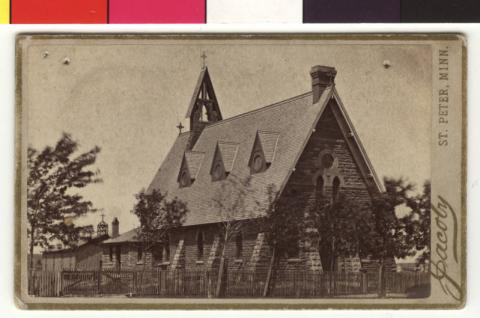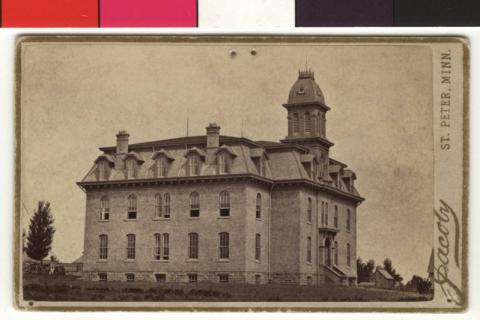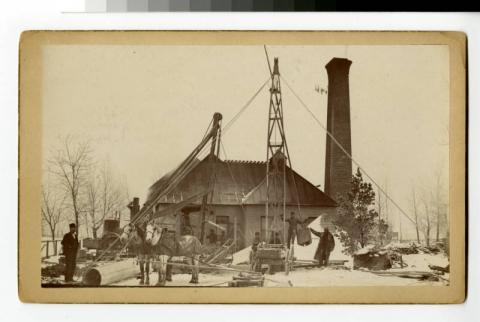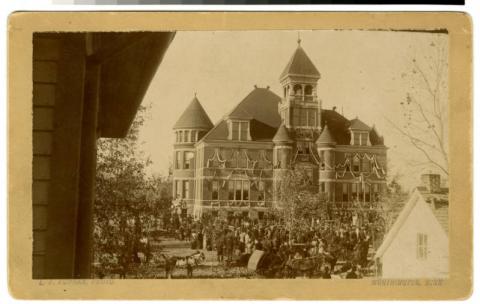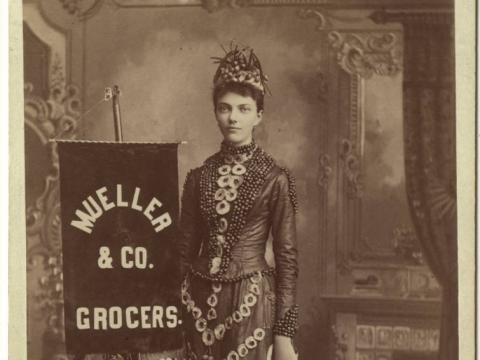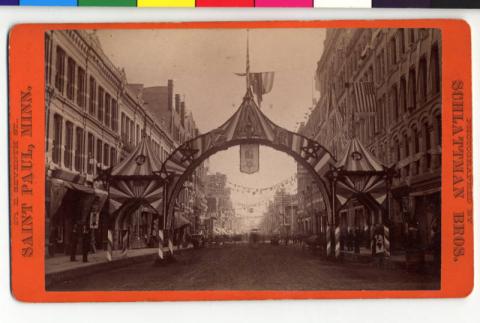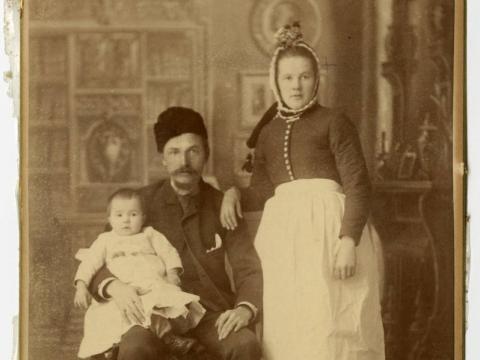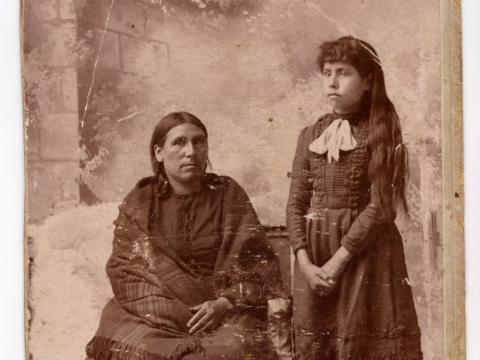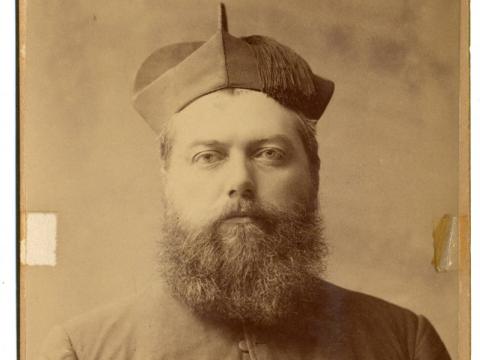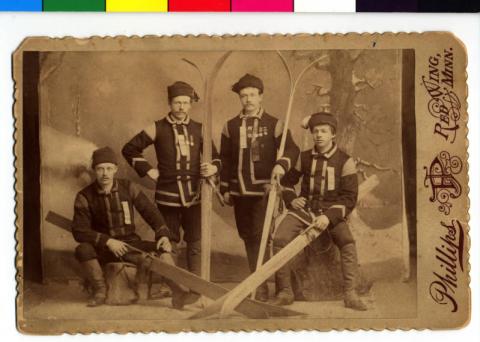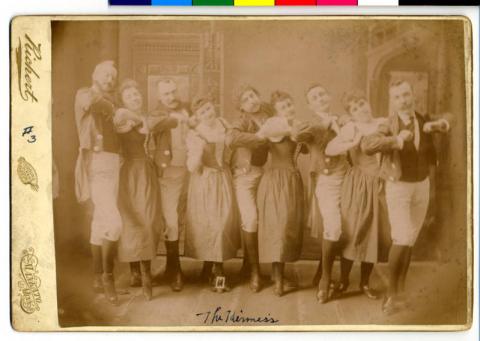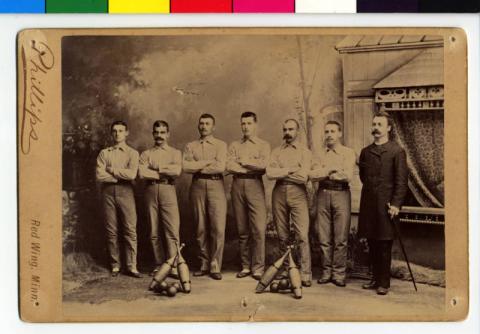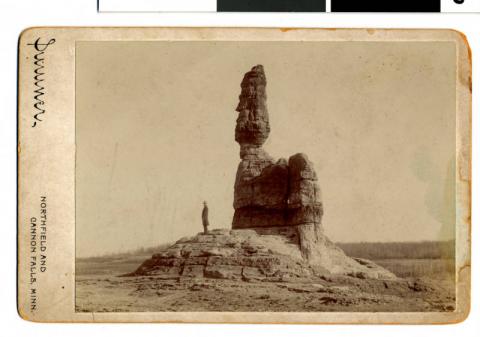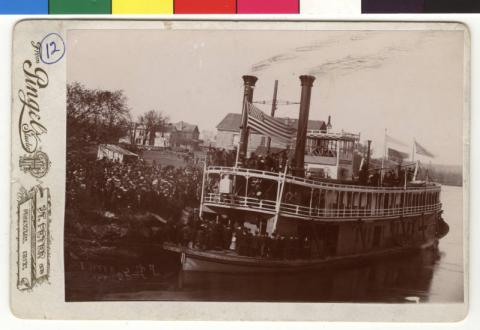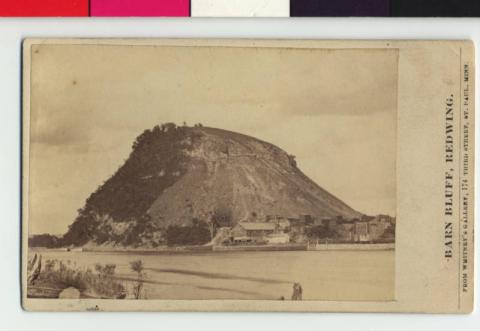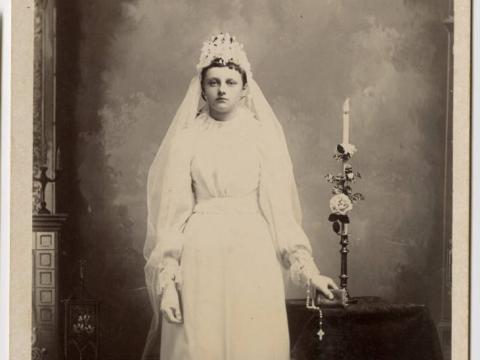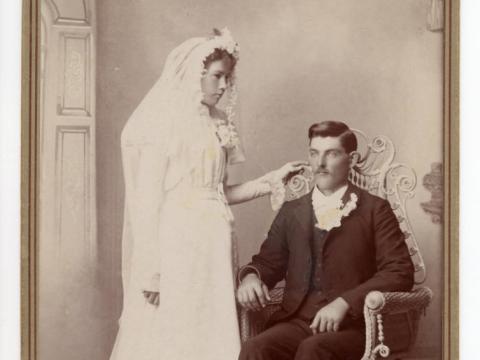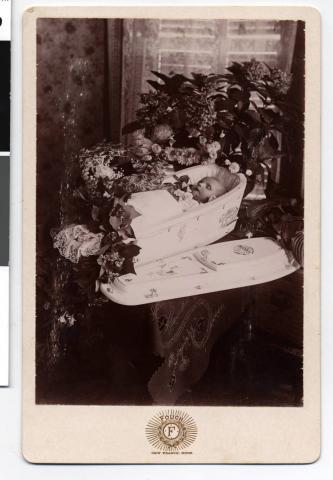Primary Source Set
by Greta Bahnemann, Metadata Librarian, Minnesota Digital Library, Minitex
Arts and Literature Format Highlight
The cabinet card or cabinet photograph was a form of photography popular during the late 19th and early 20th centuries. The cabinet card saw its origins in the smaller carte de visite, which was introduced in the early 1860s. Both the carte de visite and the cabinet card consisted of an albumen photograph mounted directly on thin cardstock. The cabinet card, measuring 4.25 x 6.5 inches, was substantially larger than the diminutive carte de visite. By the 1870s the cabinet card had surpassed the carte de visite in popularity.
The process of creating a cabinet card was relatively straightforward. The image was mounted directly onto the cardstock. A small border of cardstock remained exposed around the photograph, including a slightly wider border at the bottom of the image. This wider border frequently contained information about photographer and the photography studio. The resulting photograph was often highly decorative with the inclusion of gilt details, cut scalloped edges, and the use of colored cardstock. The decorative details on cabinet photographs was no accident. These images were designed to be placed on display in a “parlor cabinet.”
The format lent itself to both studio portrait photography as well as views of both the built and natural environments. The six rows of images featured in this Primary Source Set showcase some of the common subject matters of this photography technique: Images 1-3: examples of the built environment including a school and a church. Images 4-6: exhibitions, fairs and special events. Images 7-9: formal studio portraits. Images 10-12: sport teams, dramatic socieities, and recreational activities. Images 13-15: natural environment, natural features, and transportation. Images 16-18: examples of some of life’s most important moments including first communion, a wedding, and even the death of a beloved child.
During the 1890s increasingly complex design details were added to the cardstock blank, including rounded corners, gilt edges, and embossed text. The cabinet card essentially peaked in the late 19th century; and by the 1930s the technique had fallen out of production.
Discussion Questions & Activities
- Compare the different subject matters in the cabinet cards of this set. Explain why the cabinet card was a good format for each of these subjects.
- Look closely at image #18. Why do you think a family would ask a photographer to take a photograph of a deceased family member?
- Discuss how photography has evolved during the last 25 years with the invention of digital cameras, camera phones, and social media. How has the practice of taking photographs changed as well as the sharing, displaying, and distribution of images?
- After examining the resources in this set, ask students to write a short essay on the impact of professional photography in response to the following prompt: How did professional-created studio photography change the documentation of historic events, people, geographic places in the late 19th century? How have technological advances in cell phone cameras changed things even further into the twenty-first century?
- Design a cardboard mount that you could use for displaying your own photographs. Does the act of creating a decorative photograph and displaying it someplace change the meaning of a image?
eLibrary Minnesota Resources (for Minnesota residents)
Gormley, Myra Valderpool. “Images of the Past.” Colonial Homes, vol. 22, no. 4, Aug. 1996, p. 22. EBSCOhost. Accessed 6 Oct. 2025.
"History of photography." Britannica School, Encyclopædia Britannica, 17 Aug. 2023. Accessed 6 Oct. 2025.
McLellan, Marjorie L. "Photography." Encyclopedia of American Cultural and Intellectual History, edited by Mary Kupiec Cayton and Peter W. Williams, Charles Scribner's Sons, 2001. Gale In Context: High School. Accessed 6 Oct. 2025.
Petipas, Katherine. "Cool Things in the Collection: Hall & Lowe Cabinet Cards." Manitoba History, no. 74, Winter2014, pp. 52-53. EBSCOhost. Accessed 15 August 2017.
"Photography." Gale In Context Online Collection, Gale, 2025. Gale In Context: High School. Accessed 6 Oct. 2025.
"What is a Cabinet Card?" Michigan History Magazine, vol. 84, no. 4, 2000, p. 44+. Student Resources in Context. Accessed 15 August 2017.
Additional Resources for Research
Clark, Gary. "Cabinet Card: Beginning of Modern Portrait Photography." PhotoTree.com Accessed 29 August 2017.
Harding, Colin. "How to Spot a Cabinet Card (1866-circa 1914)." September 2013. Science + Media Museum blog. Accessed 29 August 2017.
Harding, Colin. "How to Spot a Carte de Visite (Late 1850s - circa 1910)." September 2013. Science + Media Museum blog. Accessed 29 August 2017.
“The Cabinet Card Gallery: Viewing History, Culture, and Personalities Through Cabinet Card Images.” The Cabinet Card Gallery. Accessed 30 Aug. 2017.
Published onLast Updated on
